Our Message
Oftentimes, students are blamed for their social media use or “lack of interest” when it comes to their education. However, many of us do not realize that the educational system itself contributes to pushing students further away from excelling and continuing their education. This is because students are taught to be “listening” learners, instead of proactive learners that share their own ideas to the classroom. Especially, students of color and their perspectives are often dismissed or unacknowledged. Students of color also face microaggressions and discrimination for their language, race or religion.
This content is designed to encourage educational equity and push towards bilingual education as positive tools that will help teachers understand students and students understand other students. Instead of students playing the role of “listening” learners, this content focuses on inquiry-based learning, an approach to learning that encourages students to explore the material through sharing their ideas and asking questions. Therefore, it will create a world that will know how to listen to others, but also, actively build collaboratively a better future within a community and our educational system.
Overview
This page will cover a brief history of the Latinx fight for equal education in the United States. More specifically, it will explore court cases involving the fight for education and educational equity; difficulties and successes with bilingual education; historic events like the Chicano Walkouts of 1969, and socioeconomic advantages and disadvantages Latinx students faced in public education. Furthermore, it will challenge the deficit model and deficit-model thinking that inadvertently harms Latinx students. The goal is to establish a foundation of understanding of the United States' flawed education system, which in turn, leads both students and teachers to question various institutions that inhibit Latinx students from getting quality education and equal rights. Through history and media, students, regardless of their socioeconomic background or social identities will help mold a better and brighter future for all, no matter their language, race, ethnicity, etc..
Objective 1:
Define and apply terms to current world situations.
Objective 2
Understand the history of Latinx students’ experiences within the United States educational system, deficit-model thinking, previous educational bans, and why they happened and where we are now.
Objective 3
Understand the history of bilingual education by learning the fight for equality and the importance of bilingual education programs, and comprehending biases.
Objective 4
Highlight important figures and their theories in the field of language and education.
History on Language and Education
Noted scholar Paolo Freire first described in the 1960s a common dynamic in the classroom that he called the “banking” system of education where the teacher is acknowledged as an “all-knowing” person that often translates curriculum knowledge to students in a static way. Students recognize the power dynamic because they are treated as if they do not know anything and must be taught all of the information.
However, cultural capital (the knowledge one has from being a part of a particular group or culture) is essential in education. Not every student will know how stocks work, for example, but every student will know what they have learned from their culture and world around them. Teachers who want to leverage the cultural capital of children of color and build on their cultural knowledge bases must use inquiry-based learning that critiques traditional notions of learning and knowing, and offers an alternative framework that integrates the knowledge of both teachers and students
Lesson's
Lesson 1: The Latinx Community and the U.S. Education System
Focus:
Lesson 2: Latinx students in Connecticut
Focus:
Lesson 3: The 1969 Chicano Walkouts
Focus:
Companion Literature
The House on Mango Street
-
- A story about a young Chicana, English, and Spanish girl and what it is like growing up a Latina immigrant in Chicago (she touches upon language English vs Spanish) | Link to identity page the (book is also relevant for them)
![Esperanza Rising [Book]](https://m.media-amazon.com/images/I/81ZPONpE+qL.jpg)
How the Garcia Girls Lost Their Accents
- This is a coming-of-age story about four sisters from the Dominican Republic.
Bravo! Poems About Amazing Hispanics by Margarita Engle
Gabby Garcia's Ultimate Playbook by Iva-Marie Palmer
- Dear fans of Dork Diaries and Middle School: The Worst Years of My Life—a story about a confident Latina pitcher and her journey of self-improvement
The Poet X by Elizabeth Acevedo
- Fifteen-year-old Xiomara, who goes by X, works through the tension and conflict in her family by writing poetry. The book was well-received and won multiple awards at the 2019 Youth Media Awards.
Separate Is Never Equal: Sylvia Mendez and Her Family's Fight for … by Duncan Tonatiuh
- A 2015 Pura Belpré Illustrator Honor Book and a 2015 Robert F. Sibert Honor Book Almost 10 years before Brown vs. Board of Education, Sylvia Mendez and her parents helped end school segregation in California.
Esperanza Rising by Pam Muñoz Ryan
- Esperanza Rising is a young adult historical fiction novel
Extra Resources
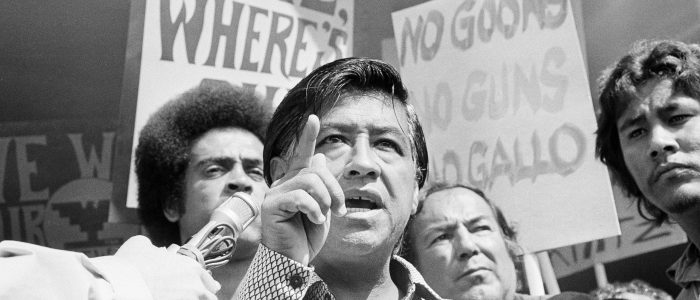
“Preservation of one’s own culture does not require contempt or disrespect for other cultures.”
Cesar Chavez

“If you really want to make a friend, go to someone’s house and eat with him… the people who give you their food give you their heart.”
Cesar Chavez

“The fight is never about grapes or lettuce. It is always about people”
Cesar Chavez
Companion Pieces for Students
To the right, we have listed some companion pieces teachers can add or recommend for students. The first four pieces are books that are made to tell different stories of people in the Latinx community. The second row has four movie recommendations for the classroom.
Lastly, we have linked four videos that talk about different perspectives people have on bilingualism and the educational system. We included two slam poetry videos on the educational system and bilingualism, a quick informational video on the benefits of bilingualism, and a video on people who are trying to reclaim their heritage by learning Spanish later in their lives.
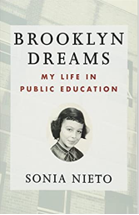
Brooklyn Dreams
Is an American musical group formed in the late 1970s, best known for their collaboration with Donna Summer on the hit song “Heaven Knows.” The group blended pop, soul, and disco influences, featuring rich harmonies and smooth vocal arrangements. Members included Joe "Bean" Esposito, Eddie Hokenson, and Bruce Sudano.
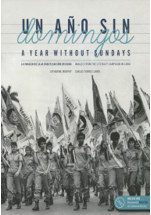
A Year Without Sundays: Images From The Literacy Campaign In Cuba
Filmmaker, Catherine Murphy (whose documentary, Maestra, is included with the book) and photographer, Carlos Torres Cairo have captured the fervor, dedication, and enthusiasm with which thousands of young people taught their fellow Cubans, from the countryside to the cities, how to read and write. In the rural countryside, the literacy teachers worked side by side with their students.
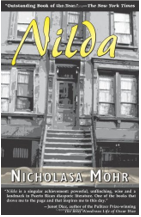
Nilda
Tells the story of a young Puerto Rican girl coming of age in Spanish Harlem during the 1940s. Through Nilda’s eyes, readers witness her childhood innocence gradually give way to an awareness of prejudice, poverty, and the struggles of her community. Celebrated for its honesty and vivid portrayal of New York’s Latino life, the novel was named an Outstanding Book of the Year by The New York Times and a Best Book of 1973 by the American Library Association
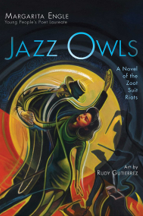
Jazz Owls: A Novel of the Zoot Suit Riots
Explores the experiences of Mexican American teens in 1940s Los Angeles, whose passion for jazz and swing dancing is overshadowed by racism and wartime tension. When white sailors launch violent attacks against Mexican American, Filipino, and African American youths—events known as the Zoot Suit Riots, or the Sailor Riots—multiple voices, including those of reporters, police, and sailors, come together to reveal the fear, prejudice, and resilience of the time.



Mexican-American students protesting outside the Hall of Justice in East Los Angeles, demanding civil rights and greater access to education for Latinos
The 13th
This movie, "explores the history of racial inequality in the United States, focusing on the fact that the nation's prisons are disproportionately filled with African-Americans."
Precious Knowledge
In Tucson, Arizona, high-schoolers and teachers try their best to save their ethinc studies class from being removed.
Walkout
A teacher becomes a mentor to Chicano high-school students protesting injustices in public schools in 1968.
Chicano! Taking Back Our Schools
The movie documents the 1968 walkout by thousands of Mexican-American high school students in East Los Angeles against unfair treatment in their schools.
By: Sabrina & Lizzette